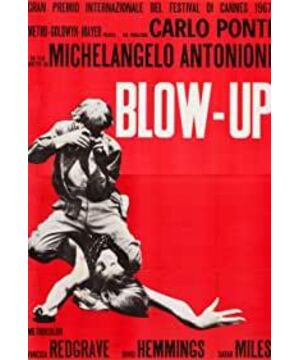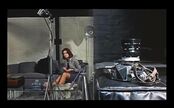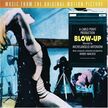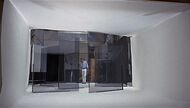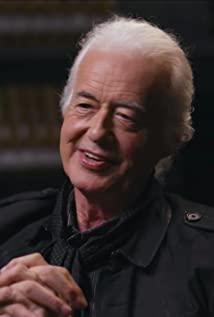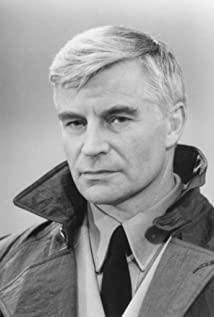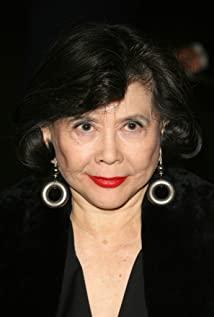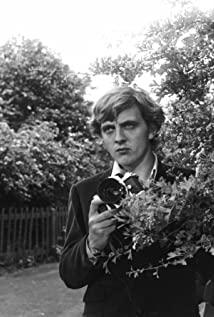The film review of "Zoom" has been written once before, and there is a reason to write it again. For the film aesthetics class this semester, the second week of the notice required the fourth week to hand in the major homework of the course, which is quite outrageous. Because of the addition of a lot of things, it can be regarded as a new work for the time being.
1. Meta-movies as philosophical texts
What is a meta movie?
• Narrow sense: a film that shows the production process or viewing behavior of an image ; • Broad sense: a film that does not hide the existence of the camera (medium), but instead highlights it;
Why study meta movies?
• The world of things is a meta-movie in itself. (Deleuze)
• The meta-movie simulates or shows the cognitive process of people's cognition of the real world (the real world ).
• Among them, the director and his avatar represent the subjectivity, the camera represents the human eye, and the conflict represents the relationship between subject and object.
• But at the same time, the meta-movie itself, as a film image, is inevitably a mimicry image in the center of the symbolic world .
• This forms a double nested relationship of viewing and being watched like " I watch the characters in the movie watching the movie ", which makes people reflect on their own situation in the real world.
• Two examples:
In the Holy Motors (Karax, Holy Motors 2012), at the beginning of the movie, the director Carrax himself appeared in the camera. He opened a door representing the fourth wall and came to a stage to watch the stage. Audience.
Generally speaking, film directors and photographers try their best to cover themselves, in order to make the audience forget that they are watching the movie, as if they are in reality.
However, through the appearance of the director himself, Karax swore the existence of the “cinematic” as a medium, reminding the audience to realize that he and the movie character are in different media levels but are in a very similar subjective situation.
In the New York Synonymy (Kaufman, Synecdoche, New York, 2008), it shows a story about a theater director constructing a drama about life. In order to transcend life with drama, he constructed a huge drama to interpret his own life in real life. He himself acts as a director and plays himself. But he quickly realized that he must play himself as the actor. Such nesting would eventually make the transcendental meaning he pursued depend on the subject-centered self-cognition process , while the true self-cognition is actually impossible to achieve.
The film uses the so-called "syndrome" to visualize the arduous Hegelian philosophy of "substance is subject". This is the value and charm of Yuan movies.
Why should "Zoom In" be treated as a meta-movie?
• The film shows and emphasizes the process of image generation (photography), and discusses the authenticity of media, images, and values around this process , and reflects on the authenticity of the process of human perception of reality through the media.
• Are the photos really real? Or do the eyes see the truth? Should I believe in the camera or believe that seeing is believing?
• If the truth cannot be proved, how should truth be defined?
• If the truth cannot be approached, does it still make sense to explore the truth?
2. Simulacrum, media and mimic environment
What is simulacra?
Plato : The simulacra is opposed to reality ; the entity is a copy of the idea, and the simulacrum is a copy of the entity , the authenticity is absolutely diminishing; he thinks that people should abandon the simulacrum and pursue the idea.
Nietzsche : The simulacra is opposed to reality ; simulacra's simulation of the real thing, on the one hand, makes it divorced from reality, and on the other hand, it makes it possible. The potential makes the mimicry transcend reality and have possible transcendence. Nietzsche gave the simulacra the lofty possibility of transcending reality.
Deleuze : A system that connects different things through difference itself is a system of simulacra. ("Difference and Repetition") Deleuze's definition of simulacra is not well understood. It can be roughly understood as: the constantly changing things have a relationship with each other , and this dynamic system is the system of simulacra. In Deleuze, simulacra and "real" are mutually generated all the time, and no moment can exist in isolation .
Baudrillard : It is generated from reality, but gradually deviates from reality and becomes only dependent on the symbolic reference between each other, so that it is more real than reality .
The plot development of the movie "Zoom" also implies the evolution of these four philosophical views.
•The profession (photographer) of the protagonist in the film is to use images to depict real entities. In Plato's time, such mimicry paintings were mainly paintings and sculptures. Of course, they were inferior and unreal. No wonder Plato opposed simulacra with reality.
• However, the cameras manufactured by modern science can capture the "real" light and shadow of the real world and generate images completely objectively. This effect is so real that under some conditions, the image recorded by the camera lens is more objective and versatile than the human eye, giving birth to a kind of "image obsession."
• This kind of image obsession is manifested in two aspects in the movie. On the one hand, as a professional photographer, the protagonist Thomas is suffering from image obsession. When he took pictures of the model, he was almost crazy, yelling "Give me that!" His enthusiasm and even his sexual desires were overwhelming.
• On the other hand, the models also showed signs of obsessive images. Professional models are allowed to be trained by photographers in order to pursue visual effects. There are also girls who do not hesitate to socialize with photographers in order to get the opportunity to take pictures. When the model faces the camera, she gradually forgets that she is being stared at by the photographer behind the camera. Because this gaze will eventually spread to a wider audience through the medium of the camera lens.
• The model's head-scraping pose becomes a performance for the other who is not present. What the photographer behind the lens desires is to use the camera, a cold mechanical device, to exercise the power to examine reality and symbolize it that cannot be evaded or rejected. At the moment the shutter was pressed, the camera and the cameraman behind it jumped out of the realm and were deified.
• There is a theory that the media form of film legitimizes the gaze of the female body and other original music through artistic and simulated voyeurism (Zizek's "Squint"). According to this statement, the film director and Thomas in the film do exactly the same. (Those models are without exception women) And noticed that the director in the filming process also has the nature of dominating the image, so this can also be understood as the director's understanding of the image obsession that is a director. Reflective image mania is also the beginning of many reflections on the meaning of images in movies.
• Out of absolute trust in images, Thomas repeatedly studied the photos he took, and finally discovered the gunmen and corpses hidden in the photos. The facts of the images overcome the incompleteness of people's perception of reality. (He didn't really see the murder happen) This is exactly what Nietzsche said that simulacra has the potential to transcend reality.
• Out of unconditional trust in the image, Thomas began to tell people around him about his accidental discovery of a murder. However, everyone questioned Thomas said: Did you really see someone being killed? At this point, Antonioni has put forward the first ontological question to us: Should we believe in camera images, or should we believe that seeing is believing ?
• The camera image is credible because it reproduces the light and shadow of "reality" without subjectivity, but in the end, people still need to look at the projection of "reality" on the photo to obtain information about the real world. By extension, all media forms, whether based on sound and light, language, painting, text, video, or word of mouth, are all transcriptions of "reality". People read the media and believe in the media, and in essence they still believe in what people see and hear. So it can be said, "The medium is an extension of the body. " ( McLuhan , communication scientist)
• In the movie, Thomas showed his wife a picture of the "corpse" he had taken. However, the wife was not convinced. Instead, she commented that this photo resembled a painting by their friend Bill (an abstract artist).
• This is tantamount to destroying the noble status of the image as the "closest medium to reality" and placing it on the same level as the painting (even the ideographic abstract painting). Indeed, the so-called "corpse" photo is very vague. What information can be read from it depends on how the viewer interprets it. That is to say, the authenticity of the image ultimately depends on the subjective interpretation of the person, and the objectivity and authenticity of the image record Of course it is difficult to be convincing.
• However, Thomas also saw the dead body with his own eyes. How can this be explained? • This involves another layer of connotation of the film, that is, the use of human sensory experience as a medium to question its authenticity.
• Human senses are the most direct medium through which people perceive the object world. Is it really credible? Pathologically, people will have visual hallucinations, auditory hallucinations, touch hallucinations and other symptoms. However, in a more general sense, even if our audio-visual system does read the real and effective information from the real world, it truly processes the information. And what we understand is still our subjective will.
• In philosophy, we believe that when someone sees a thing, his categorical understanding of the thing will always be ahead of his analytical understanding of the thing. This characteristic of human cognitive process is called transcendental imagination in Kant , and Hegel called it absolute spirit . No matter which philosopher sees it, this kind of super-perceptual cognition is indispensable to the subject. Be sure and uncontrollable. , It even exists before human subjectivity.
*An example of transcendental imagination: If a person goes to a haunted house, reason will of course tell him that all the ghosts he sees are pretended by the staff, and ghosts do not exist, but the moment he sees a ghost, he still You will be frightened and scream, this is because super-perceptual cognition precedes rationality; even if he tries his best to control, he still cannot be unafraid. This is because absolute spirit exists before the subject.
• The result of the existence of a priori imagination is that seeing is not necessarily believing. To put it more accurately, seeing can't be believing . Because the eye is just a non-transcendental physiological structure, its function is no different from that of a camera, and its essence is still a medium, or the body is another layer of medium.
• Thomas did "discover" the body, but this information needs to pass through a subjective symbol system of Thomas' eyes and mouth before it can enter the process of dissemination. In the eyes of others, Thomas "seeing the corpse" and Thomas interpreting "there is a corpse" from the photos are actually his own opinions after the subjective interpretation of Thomas. In addition, the occurrence of homicide is a small probability event, which can easily be understood as "Thomas just misunderstood". This puts Thomas in a dilemma that needs to prove that the medium is true at all times.
• As a typical anti-drama film, the director has no intention of telling a story. The disappearance of the body here is definitely not to guide the audience to think about "Who removed the body?", "Who is the murderer?" or "Why is there no mark on the grass? ?"
• In fact, no matter how certain Thomas is that the homicide did happen from the level of personal perception, in order to confirm this fact, the participation of the media (photos, what he saw) is needed, but these media do not make others feel convince.
• The medium depends on reality to produce, and reality depends on the medium to communicate (as Deleuze discussed). Thomas finds that he is in a dilemma that requires constant interpretation of the authenticity of the medium but can never be conclusively confirmed. The fact that the medium cannot be used to explain the truth is enough to make a professional photographer fall apart.
*In fact, there is no explanation for the murder in the second half of the movie. The disappearance of the corpse here is a purely conceptual disappearance, a philosophical disappearance. The fact that the audience should accept is that the homicide that the photographer envisioned has never existed. By deliberately de-story, the director seems to declare: the truth surrounding this murder is not important at all, he is concerned with philosophical propositions in a broader sense.
• Strictly speaking, any information filtered by the media is not true. Without entering the symbol system and being castrated, the kind of reality (Kant called the thing-in-itself, Lacan called the real world) of the original appearance is never available.
• However, people have to rely on the media to understand the world anyway . Therefore, people can only live in a world composed of media. What we see and feel is all information processed by the senses and other media. This information comes from reality, but it is not equivalent to reality.
• Without reality, the sense organs cannot receive any information; without the sense organs, the real world can be said to not exist (in the world that people can perceive, or according to Lacan’s words: the symbolic world).
• Once you accept this fact, you actually become a Deleuzeist: Simulacrum and reality reproduce each other, overlapping and appearing forever like an eternal rotation, and they are inseparable for a while. This is the explanation for the weird phenomenon of corpses appearing and disappearing.
• Until Thomas discovered that the body disappeared, the plot of the movie was over, but the director was afraid that his meaning was not clear enough, so he carefully conceived a subtle and weird "non-existent tennis match."
• Just as Thomas was puzzled by the disappearance of the corpse, he met a group of young hippies dressed in weird clothes and smeared with funny white paint. The hippies passed by Thomas in a noisy car and came to a tennis court. The weird thing is that they didn't have tennis or tennis rackets, but they played tennis back and forth as if they were acting like they did.
• The film has a profound meaning for the performance of this segment. The first paragraph is silent. After swinging the racket back and forth, the sound of the racket hitting the tennis ball began to appear faintly. We can also say that the sound of tennis hits gradually appeared in Thomas, who was watching. After experiencing a homicide that had never happened before, he began to re-examine the boundary between reality and falsehood, and he was able to hear the real voice from a non-existent tennis match.
*The director uses the audiovisual language of "gradual sound", cleverly using sensory changes to convey cognitive changes at the philosophical level. A variety of textual analysis can be carried out around this short video of a few minutes. This is the art of film The unique artistic expression of the medium.
• What’s even more wonderful is that this non-existent tennis match finally established the protagonist’s understanding of the "real". In the court, two "players" are playing tennis that does not exist. Following their eyes, we can also vaguely see the ball's flight path. A golfer hit the ball out of the court and the ball flew in Thomas's direction. Suddenly, everyone's eyes were on Thomas. Under the gaze of everyone, Thomas also joined this "non-existent tennis match", picked up the ball and threw it back.
• Thomas’s picking up the ball marked the final establishment of his views on reality and imagery. If his conception has been adjusted to a Deleuze-style "symbiosis" that regards reality and simulacrum as the same, and his opponent feels a little annoyed by the "failure" of the film, then here in this group of hippies, we can see The simulacra that is overhead above the reality seems to form a self-consistent whole (through people's mutual confirmation), and becomes a higher-level simulacra system that is more real than reality. This is what Baudrillard calls hyper-reality. .
• In the eyes of ordinary viewers, the behavior of this group of people and Thomas "pretending to have the ball" is absurd and unreasonable. So, we can't help but want to ask, how did such a mysterious and strange "mimicry" come about? In fact, there is also Lippmann, a communication scientist who has similar views as Baudrillard, who put forward the concept of mimic environment , which helps us understand this non-existent tennis match.
• As we mentioned before, Thomas himself is in a dilemma where he needs to prove that the media is real but in fact unavailable. If we extend Thomas’s situation to the group, it is what Lippman calls mimicry to change the environment.
• When the vast majority of people in a society hold a wrong understanding of realization, those who hold the correct understanding will not be able to confirm their own understanding through the other in the mirror image, or fear being excluded, so they adjust their own understanding Be the same as the public, or keep your own point of view but keep silent. Over time, everyone in this society began to hold the same argument, and the truth became more distant, and it was even impossible to be known at all. This is the silent spiral theory in public opinion proposed by Lipman .
• In a non-existent tennis match, when all the others on the court think that tennis exists, Thomas will discover that it is meaningless to be true. Because all these people together form the mimicry environment Thomas is in, and this mimicry environment is the closest living environment to the subject itself. It is more real than real.
• Therefore, when everyone in the mimicry environment accepts the fact that tennis exists, in a practical sense, the existence of tennis becomes a fact. We can say that all aspects of modern life are affected by the mimicry environment, and the emperor’s new clothes are happening every day.
3. Value identification and symbolic exchange
• In addition to the main storyline, there are also some interesting episodes in the movie. They all point to the motif of "value identity".
• Thomas saw an abstract painting painted by a friend at the home of a painter friend, and immediately said he wanted to buy it.
Thomas saw a huge and old propeller in a thrift store. He was very excited, claiming that without this propeller he would "cannot live for a minute".
• Baudrillard pointed out that people in contemporary society are no longer consuming materials, but consuming symbols. Combined with the previous understanding of simulacra, the concept of consumer society is not difficult to understand.
*When everyone says that something is valuable, then it is really valuable. Big names, fashion, Bitcoin, etc. all rely on people's recognition of their value to have value.
*In contrast, in the era of material poverty before the advent of modernity, people mainly consumed the use value of commodities.
• There is such a scene in the movie. Thomas comes to a rock music scene. The rock star removes the handle of his guitar and throws it at the crowd. Thomas struggles to grab the commemorative guitar handle, but quickly loses it. A passerby picked it up and took a look, and quickly threw it away.
• In this scene, the rock scene itself is a typical system of such a mimic environment. For a rock fan, a broken guitar used by an idol may be worthless, but for an accidental intruder like Thomas, it is not worth anything.
• In a mimic environment, the value of a thing does not depend on an internal value-determining logic, but is determined by its mutual referential relationship with other signifiers in the signification system. Therefore, when Thomas falls into a fanatical crowd, he naturally also associates the guitar handle with value. When he was alone, he found that the guitar handle was completely worthless to him, because the mimicry environment he was in had collapsed and ceased to exist.
• The same value scrutiny is also reflected in previously purchased artworks and second-hand goods. After confirming the existence of the body in the park, Thomas rushed home and looked at the artwork and propellers he had bought, thoughtfully.
• Here, the reality of simulacra and the reality of value are connected. If we take value as a simulacrum, we find that Thomas cannot be sure whether a murder has occurred, and he cannot be sure whether the propeller he bought is really valuable, the two are almost the same.
*For Baudrillard, the theory of simulacra (see "Simulation and Simulation") and the theory of consumer society (see "Consumer Society", "System of Objects" and "Critique of Political Economy of Signs") themselves are the products of the same period of thought , Its core is highly correlated.
View more about Blow-Up reviews


